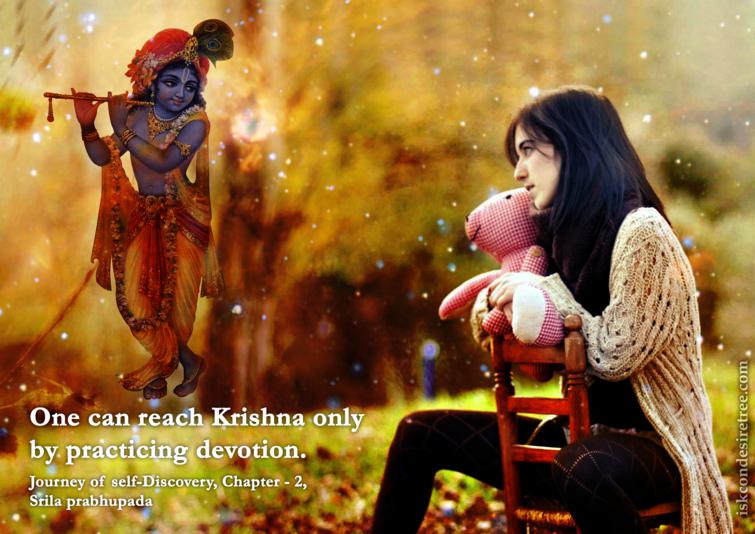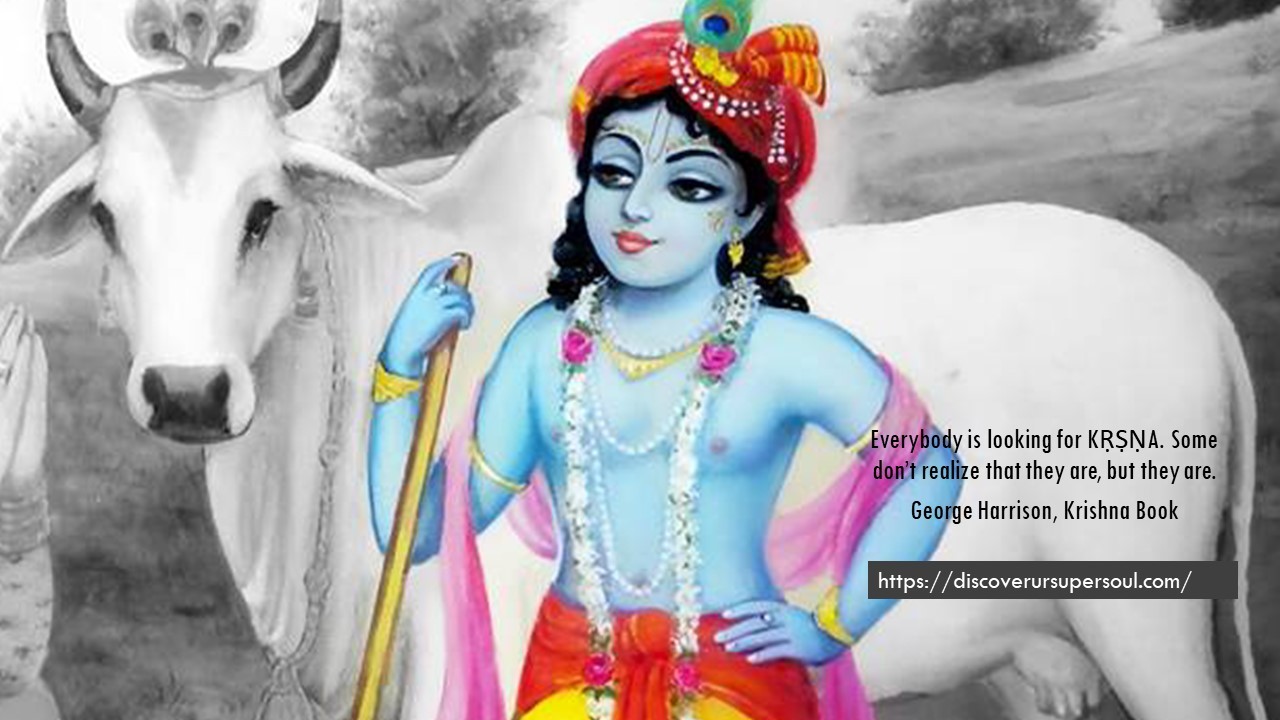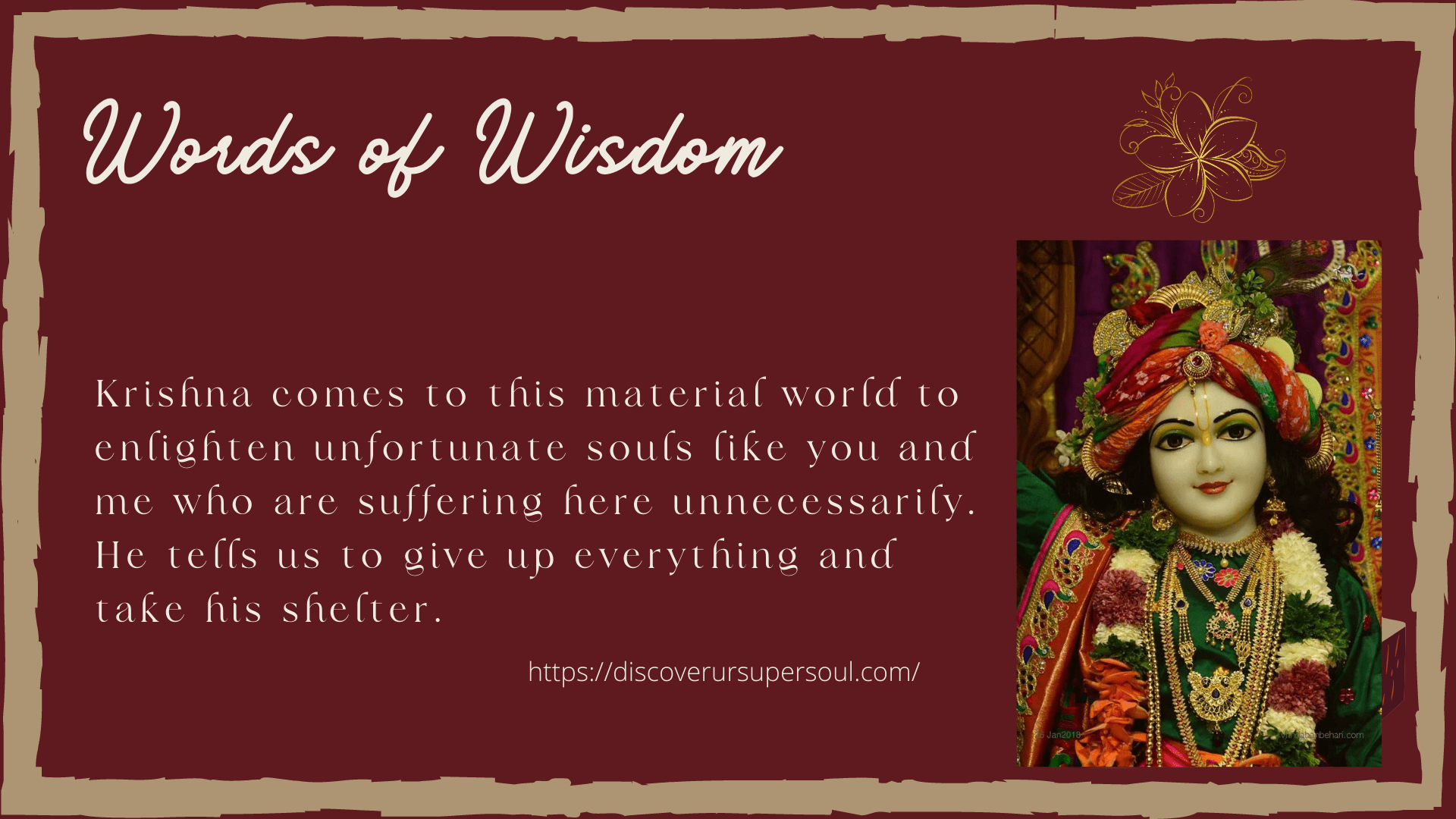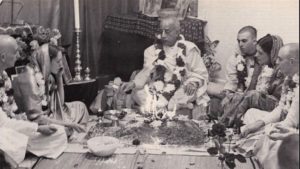
In Srimad Bhagvatam, Prahlad explains about the nine processes of pure devotional service which is called nava vidha bhakti.
śravaṇaṁ kīrtanaṁ viṣṇoḥ
smaraṇaṁ pāda-sevanam
arcanaṁ vandanaṁ dāsyaṁ
sakhyam ātma-nivedanam
“Hearing and chanting about the transcendental holy name, form, qualities, paraphernalia and pastimes of Lord Viṣṇu, remembering them, serving the lotus feet of the Lord, offering the Lord respectful worship with sixteen types of paraphernalia, offering prayers to the Lord, becoming His servant, considering the Lord one’s best friend, and surrendering everything unto Him (in other words, serving Him with the body, mind and words) — these nine processes are accepted as pure devotional service.” Srimad Bhagavatam 7.5.23-24
Scriptures explain that just by practicing one of the principles of nava vidha bhakti one can attain complete perfection and return back to the spiritual world. Srila Rupa Goswami in Bhakti-rasāmṛta-sindhu (1.2.265) gives the examples of devotees who attained salvation just by practicing one of the processes of nava vidha bhakti.
śrī-viṣṇoḥ śravaṇe parīkṣid abhavad vaiyāsakiḥ kīrtane
prahlādaḥ smaraṇe tad-aṅghri-bhajane lakṣmīḥ pṛthuḥ pūjane
akrūras tv abhivandane kapi-patir dāsye ’tha sakhye ’rjunaḥ
sarvasvātma-nivedane balir abhūt kṛṣṇāptir eṣāṁ param
Examples of nava vidha bhakti given by Srila Rupa Goswami
Let us understand in detail:
śravaṇaṁ (hearing):
śravaṇaṁ or hearing is one of the most important devotional activities. Parīkṣit Mahārāja attained complete perfection by hearing Srimad Bhagavatam continuously for seven days from Sukadeva Gosvāmī.
kīrtanaṁ (chanting):
Sukadeva Gosvāmī attained perfection by reciting i.e. by chanting(kīrtanaṁ) Srimad Bhagavatam for seven days to king Parikshit.
smaraṇaṁ (remembering):
Prahlāda Mahārāja always remembered (smaraṇaṁ) the Lord. He never forgot the Lord even for a moment.
pāda-sevanam (serving the feet of the Lord):
Lakṣmīdevī , the goddess of fortune, is always busy serving the lotus feet of the Lord.
arcanaṁ (offering worship):
Pṛthu Mahārāja worshipped the deity of the Lord and perfected his life.
vandanaṁ (offering prayers):
Akrūra while entering Vrindavan offered prayers to Lord Krishna. He thus pleased Krishna by his beautiful prayers and attained salvation.
dāsyaṁ (becoming the servant):
Hanumān, the great devotee of Lord Rama, was always eager to serve the orders of Lord Rama. Like a humble and loyal servant, he loved to serve the Lord and thus he attained mercy of Lord Rama and ultimate perfection.
Sakhyam (becoming the best friend):
Arjuna became a dear friend of Lord Krishna and attained salvation.
ātma-nivedanam(surrendering everything, whatever one has):
Bali Mahārāja surrendered everything including his own self to Lord Vamana and attained the mercy of Lord.
All the nine processes of nava vidha bhakti was practiced by King Ambarish.
Examples of nava vidha bhakti from Ramayana
The devotees who participated in the pastimes of Lord Rama also practiced nava vidha bhakti. This was revealed by HG Radha Gopinath Prabhu in one of his Srimad Bhagavatam class at Iskcon New Town Kolkata temple. Let us see the examples which he discussed from Ramayana of the devotees who perfected their life by practicing one of the processes of nava vidha bhakti.
Sravanam (hearing):
Hanuman is the best example of a devotee in Ramayana who perfected his life by sravanam. Wherever there is Rama Katha, Hanuman is present. He delights in hearing the glory of Lord Rama. He has attained complete perfection by being engaged in hearing the wonderful pastimes of Lord Rama. We also see that he is always engaged in serving the instructions of Lord Rama.
While comparing with different devotees Rupa Goswami has said that Hanuman perfected his life by being a humble and obedient servant of Lord Rama. But if we just focus on the devotees in Ramayana then it is said that Hanuman is the best among all the devotees who always liked to hear Rama Katha.
Hanuman is so great devotee that he does not want anything in return from the Lord. Once Lord Rama said to Hanuman, “You have served me so much, I will always be indebted to you. Let me know what you want, and I will grant you that benediction.” For few moments Hanuman did not say anything. He then folded his hands and with tears in his eyes, he humbly said, “My dear Lord I want nothing from you. I just want to be yours forever.” Lord Rama was overwhelmed with joy. He dd not say anything. He just embraced him.
kīrtanaṁ (chanting):
Sage Valmiki perfected his life by writing Ramayana. In Ramayana he has sung (kirtanam) the glories of Lord Rama and Mother Sita. He got boon from Brahma that he will be able to know all the minute details of the pastimes of Lord Rama and based on that he will be able to write in detail about Lord Rama’s different activities in this world. Ramayana is the only book sage Valmiki wrote and he attained eternal glory and eternal mercy of Lord Rama.
There have been many wonderful books written on the glorious pastimes of Lord Rama but Valmiki’s Ramayan standout amongst them. It is the first authoritative book on Lord Rama and any book which is written is based on Valmiki’s Ramayana. Sage Valmiki has captured each and every detail in his book. Lav Kush, the twin sons of Lord Rama and Mother Sita heard Ramayana from sage Valmiki and then recited it with great feeling of love and reverence.
An interesting pastime related to Ramayana
There is one interesting pastime related to Ramayana which is discussed amongst the devotees of Lord Rama. Once Valmiki was narrating Ramayana. So, Hanuman also came. Because wherever Lord Rama’s pastimes are discussed Hanuman is there. But he was sitting behind. Valmiki did not notice him. While narrating Ramayana, Valmiki said that when Hanuman entered Ashok Vatika in Lanka then there were white flowers in the garden.
From behind Hanuman said that the flowers were red in colour. Valmiki said that it was white. Again, Hanuman said that it was red. Valmiki who had not seen Hanuman said how can you say that the flowers were red. Hanuman then said because I am Hanuman and I was the one who entered Ashoka Vatika. Valmiki said I agree that you entered the Ashok Vatika but the flowers there were white and not red. You saw the flowers red because you were angry at that time.
smaraṇaṁ (remembering):
Mother Sita always remembered Lord Rama. This is the reason that while entering into fire she said that if even for a moment I have thought of anyone else other than Lord Rama then let me burn to ashes. She was completely absorbed thinking about Lord Rama.
pāda-sevanam (serving the feet of the Lord):
The best example is of Bharath. He is the personification of pada sevanam. For 14 years he served the paduka of Lord Rama.
arcanaṁ (offering worship):
Sabari is the best example. She offered half eaten berry to Lord Rama with great love. Rama, the Supreme Lord, was so pleased with her service, with her love that he ate the remnants of Sabari. Her purity, her humility, her sincerity and her great devotion attracted Lord Rama’s heart. She perfected her life by serving Lord Rama. In Bhagavad Gita, Lord Krishna says that he is hungry for our love and not for anything else. So, if someone offers him even the simplest thing with love, he accepts it.
“If one offers Me with love and devotion a leaf, a flower, a fruit or water, I will accept it.” Bhagavad Gita 9.26
vandanaṁ (offering prayers):
The sages of Dandakaranya offered beautiful prayers to Lord Rama when Lord Rama visited them in the forest. Because of their prayers they pleased the Lord. And when the Supreme Lord appeared as Lord Krishna in Vrindavan then these sages too appeared as gopis and got an opportunity to associate with Lord Krishna and serve Lord Krishna.
dāsyaṁ (becoming the servant):
In Ramayana Lakshman was the perfect servant of Lord Rama. He was the shadow of Lord Rama. It is said that when Lord Rama was in exile for 14 years then Lakshman did not sleep even for a moment because he was serving Lord Rama and Mother Sita each moment. Not just he served Rama and Sita in the forest but throughout his life he served Rama. He was given many thankless tasks but he did it because he always wanted to follow the instructions of Lord Rama.
Sakhyam (becoming the best friend):
In Ramayana Sugriva perfected his life by becoming the best friend of Lord Rama.
ātma-nivedanam(surrendering everything, whatever one has):
Vibhishana and Jatayu are the best examples of atma nivedanam in Ramayana. They both completely surrendered to Lord Rama. Jatayu sacrificed his life for the Lord and Vibhisan completely gave up everything to be with Lord Rama.
The devotee who practiced all the 9 processes of devotional life and perfected his life was Maharaj Guhu.






